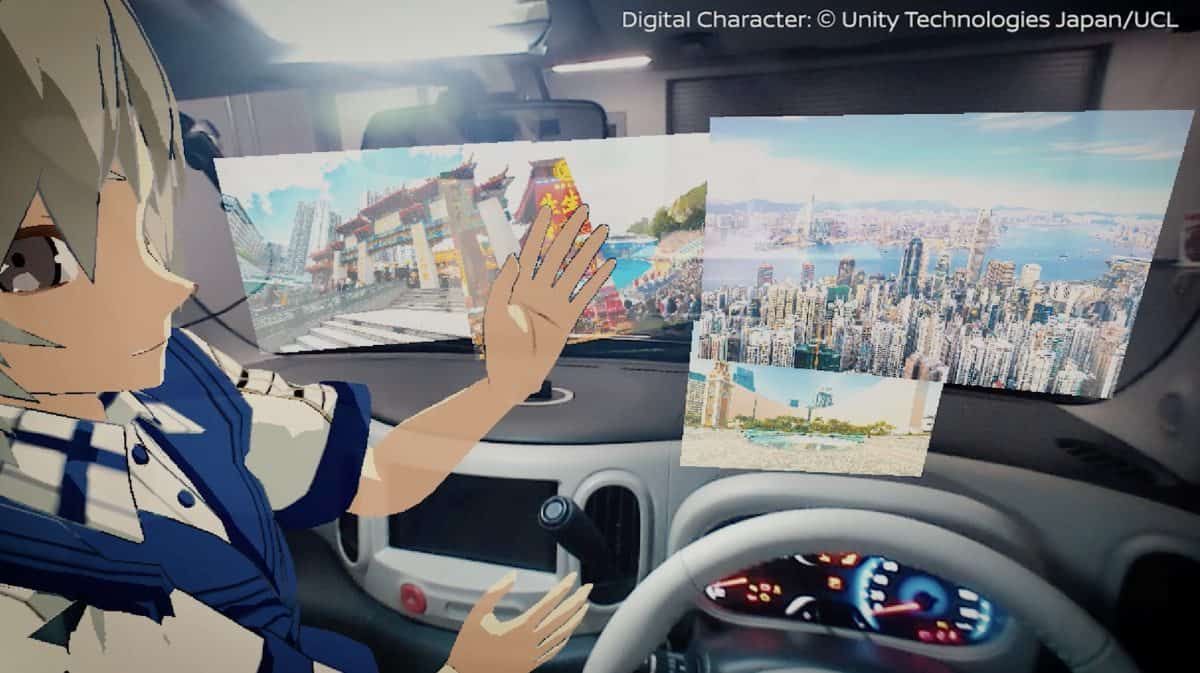
Car maker Nissan has unveiled a vision of the future where virtual avatars of real people can be beamed into the passenger seat.
The cutting-edge technology is known as ‘Invisible-to-Visible’, or I2V, and could entirely change the way we drive.
For example, a 3D moving image of a passenger demonstrating the best way to drive could improve road safety.
Or drivers could simply beam an augmented reality version of a family member into the passenger seat to keep them company.
The next-generation tech can even show scenery of a sunny day in the vehicle – when it’s actually raining.
Tetsuro Ueda, an expert leader at the Nissan Research Centre, said: “By helping you see the invisible, I2V enhances your confidence and makes driving more enjoyable.
“The interactive features create an experience that’s tailored to your interests and driving style so that anyone can enjoy using it in their own way.”
In what Nissan are calling the ‘Metaverse’ – the virtual world that autonomous cars can connect to – it will even be possible for family, friends or others to appear inside the car as three-dimensional, augmented-reality avatars to provide company or assistance.
The ‘Metaverse’ maps a 360-degree virtual space around the car to provide information about things like road and intersection status, visibility, signage or nearby pedestrians.
It can also monitor the people inside the vehicle by using interior sensors to better anticipate when they may need assistance with finding something, or a coffee break to stay alert.
And if an obstacle comes up that the car’s automatic systems can’t anticipate, like a fallen tree, control is instantly handed to expert human guides that can remotely offer assistance – like NASA offering guidance on a space mission.
The futuristic tech will be on display at the Consumer Electronics Show in Las Vegas from January 8-11.
Visitors to CES can experience ‘I2V’ at Nissan’s display by putting on a pair of augmented-reality goggles and stepping inside a demonstration cockpit featuring three-dimensional interfaces and displays.
Users are guided through scenarios including a tour of a city, receiving help to find an open parking space at a busy mall, seeing a rainy day outside change to a sunny day inside the car, chasing a professional driver avatar to improve driving skills and exploring how I2V can see through buildings and around corners.
By Richard Jenkins